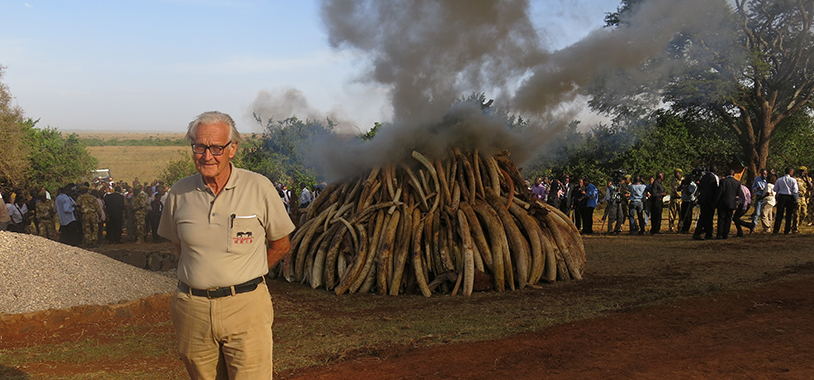On March 3rd a plume of dark smoke curled over Nairobi National Park in Kenya. A funeral pyre of 15 tonnes of elephant tusks had been erected and set alight on a day that was at once tragic and full of hope.
Kenya’s latest ivory burn comes at the end of a momentous week for elephants and their future. Six days ago China put in place a highly symbolic ban on ivory imports, seeming to signal that this great world power appreciates that she holds the future of Africa’s elephants in her hands.
The ban represents a tightening of the noose. Of course we want a total ban on ivory trade and this is the biggest prize. China is watching the US introduce ivory bans State by State. If they would follow suit at a national scale this would hugely reduce the demand that is driving the killing of elephants and the trafficking of ivory with its smokescreen of legal sales. What’s interesting is the gradual shift of the Chinese government towards stricter and more drastic measures to help save elephants. The country is no longer denying that demand for ivory is a problem and they have tacitly encouraged NGO’s to help reduce this demand.
After torching the stockpile, Kenya’s president pledged to destroy all the nation’s ivory – one of the world’s largest stockpiles – in a leading gesture that echoes 1989 when Kenya’s ivory burn helped trigger the international ban on the ivory trade that remains in place today.
“In order to underline our determination to eradicate poaching my government will burn the rest of the stockpile that we have within this year,” said President Kenyatta. “We hope that the rest of the world will follow our action in the same manner.”
In one stroke Kenya has committed to putting their ivory beyond commercial use, a pledge that several African nations made in the London conference of February 2014. It is particularly significant that Kenya has regained position of leadership in the fight to save elephants and we are all elated that this has happened. To ice the cake all Kenya needs now do is join the African-led Elephant Protection Initiative that was created in February 2014 when Botswana, Gabon, Chad, Ethiopia and Tanzania signed up.
“Our message must remain clear,” continued the President. “Many of these tusks belong to elephants that were wantonly slaughtered by criminals. We want future generations of Kenyans, Africans and indeed entire world to experience the majesty and beauty of these magnificent animals in the natural world. Poachers and their enablers will not have the last word in Kenya.”
Britain’s Prince William recently also urged an end to the ivory trade whilst visiting a Chinese elephant sanctuary in the southwestern province of Yunnan at the close of a three-day trip to the country that focused partly on wildlife conservation.
“A powerful blow we can strike against traffickers is to reduce the demand for their products. Demand provides traffickers with their incentive. It fuels their greed, and generates their vast profits,” William said in a speech released by Britain’s royal household. “Ultimately, ending demand for ivory is down to citizens across the world,” William said, adding he welcomed “the steps that China has already taken” to counter the trade.
Watch video of the Ivory Burn


